We all deserve to create. Some people seem to have the muses hidden in their pocket, but everyone benefits when they express themselves in their chose art form. Each of us has tools, from Dremels to paintbrushes, and many folks here build their own implements. Even if we don’t have our macro-enabled mechanical keyboard or a dual-extrusion printer, we can make due. But what if you couldn’t operate your drill, or mouse, or even a pencil? To us, that would be excruciating and is the reality for some. [Laura Roth] and [Christopher Sweeney] are art teachers designing a tool holder for their students with cerebral palsy so that they can express themselves independently.
 On either side of this banner image, you can see pencil drawings from [Sara], who has spastic cerebral palsy. She made these drawings while wearing the tool holder modeled after her hand. Now, that design serves other students and is part of the 2020 Hackaday Prize. The tool holder wraps around the wrist like a wide bracelet. Ribbing keeps its shape, and a tube accepts cylindrical objects, like pencils, styluses, and paintbrushes.The result is that the tip of the pencil is not far from where it would have been if held in the hand, but this sidesteps issues with grip and fine control in hands and fingers.
On either side of this banner image, you can see pencil drawings from [Sara], who has spastic cerebral palsy. She made these drawings while wearing the tool holder modeled after her hand. Now, that design serves other students and is part of the 2020 Hackaday Prize. The tool holder wraps around the wrist like a wide bracelet. Ribbing keeps its shape, and a tube accepts cylindrical objects, like pencils, styluses, and paintbrushes.The result is that the tip of the pencil is not far from where it would have been if held in the hand, but this sidesteps issues with grip and fine control in hands and fingers.
The print is available as an STL and should be printed with flexible filament to ensure it’s comfortable to wear. Be mindful of digital styluses which may need something conductive between the barrel and user.
Hackers are familiar with the challenges of cerebral palsy, and we’ve enjoyed seeing a variety of solutions over the years like door openers, camera gimbals, and just being altogether supportive.

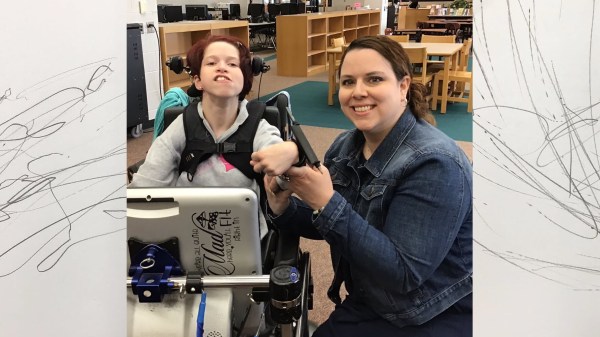




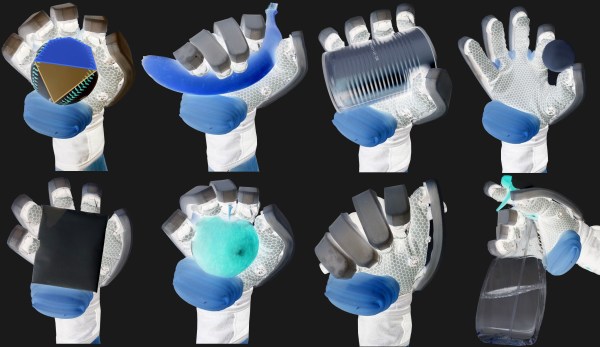
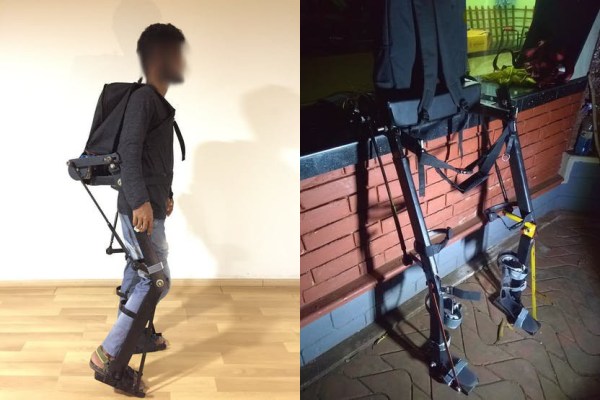
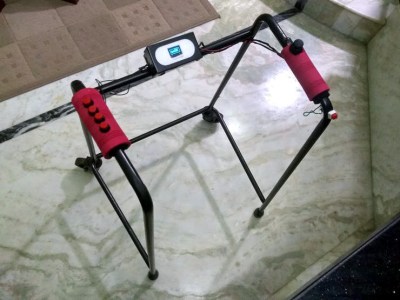
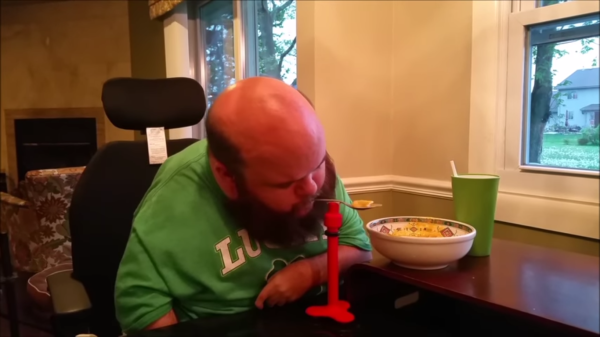
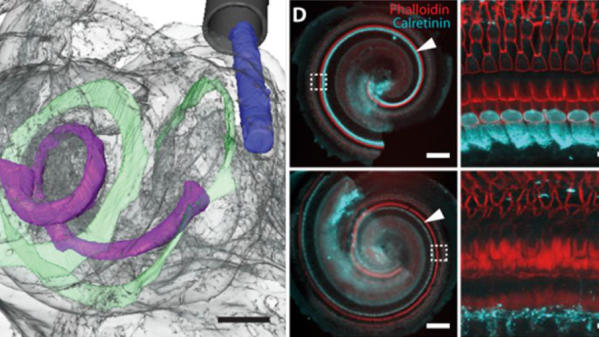


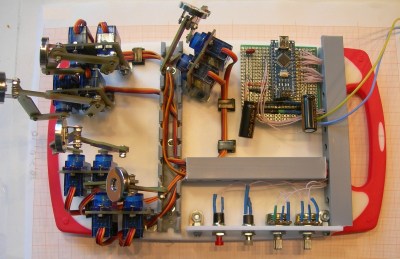 He’s using ten hobby micro servos connected to an Arduino Nano, all mounted on a kitchen chopping board, with a few other bits thrown in to round out the build. There’s one pair of servos for each finger. A five bar linkage converts the servo rotations to two-dimensional motion. The end of the linkage has a swiveling metallic disk. Patient fingers are attached to these discs via magnetic metal pads that are attached to the end of the fingers using adhesive plaster tape. Two push buttons cycle through a large number of exercise modes and two potentiometer’s help adjust the speed and smoothness (the number of points calculated for the desired motion). Two 7-segment LED display modules connected to the Arduino provides a visual interface showing program modes, speed, number of cycles and other relevant information. Replicating the project ought to be very straightforward since the device uses off-the-shelf parts which are easy to put together using the detailed build instructions, photos and code posted on [Sergei]’s project page. Check out the videos below to see the rehab helper in action.
He’s using ten hobby micro servos connected to an Arduino Nano, all mounted on a kitchen chopping board, with a few other bits thrown in to round out the build. There’s one pair of servos for each finger. A five bar linkage converts the servo rotations to two-dimensional motion. The end of the linkage has a swiveling metallic disk. Patient fingers are attached to these discs via magnetic metal pads that are attached to the end of the fingers using adhesive plaster tape. Two push buttons cycle through a large number of exercise modes and two potentiometer’s help adjust the speed and smoothness (the number of points calculated for the desired motion). Two 7-segment LED display modules connected to the Arduino provides a visual interface showing program modes, speed, number of cycles and other relevant information. Replicating the project ought to be very straightforward since the device uses off-the-shelf parts which are easy to put together using the detailed build instructions, photos and code posted on [Sergei]’s project page. Check out the videos below to see the rehab helper in action.









